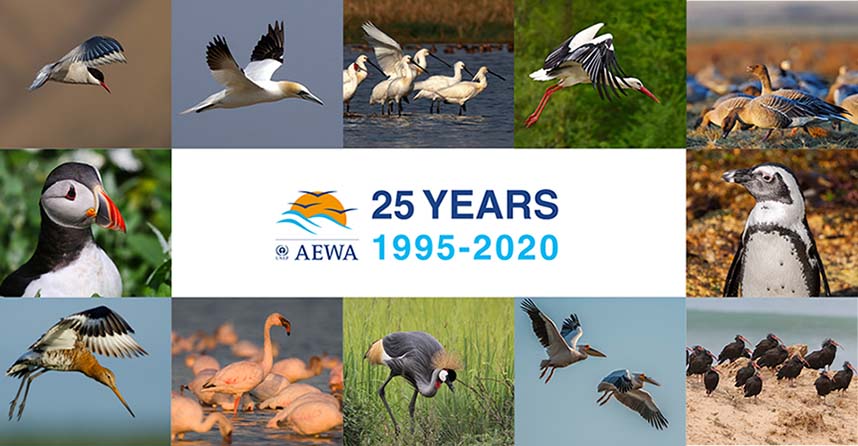
16 Jun 2020 25 years of AEWA – the road to success for conservation and management of waterbirds
BACKGROUND On 16 June 1995, in the Hague, the Agreement on the Conservation of African-Eurasian Migratory Waterbirds (AEWA) was signed. Today, it counts 80 contracting parties across the flyway, which regularly cooperate to conserve and manage these important birds. Unlike many other agreements, its concept of conservation includes firm recognition of sustainable use and for this reason, it remains a very important for European hunters.
From the beginning, the topics of compatibility with the EU Birds Directive and the hunting of waterbirds were part of the negotiations and remain a challenge today. Thankfully, many milestones have been reached over the last 25 years, including on how to achieve sustainable hunting at the international level by setting agreed harvest rates, which many considered impossible. This success has been demonstrated this week at AEWA’s European Goose Management Platform.
The pioneering Svalbard Pink-footed Goose management plan is running its annual routine and close to reaching the target population level through adaptive harvest. Equally, the Taiga Bean Goose action plan has been successful in reversing the population decline, while allowing some limited hunting rather than imposing a total moratorium. For the next hunting season, this limited harvest will be slightly increased, due to the recovery. These processes have also furthered our knowledge of the species and helped develop expertise of adaptive harvest in Europe.
FACE is pleased to join AEWA in celebrating its anniversary and looks forward to further successes in the conservation of waterbirds.
More info:
https://www.unep-aewa.org/en
https://egmp.aewa.info/
https://www.unep-aewa.org/en/publication/aewa-conservation-guidelines-no-5-guidelines-sustainable-harvest-migratory-waterbirds-ts
Photo credits: see link.

